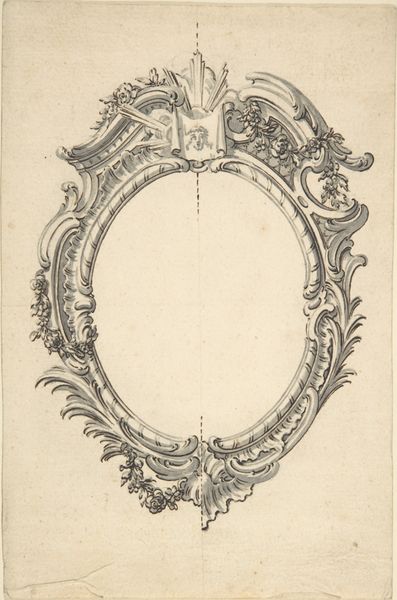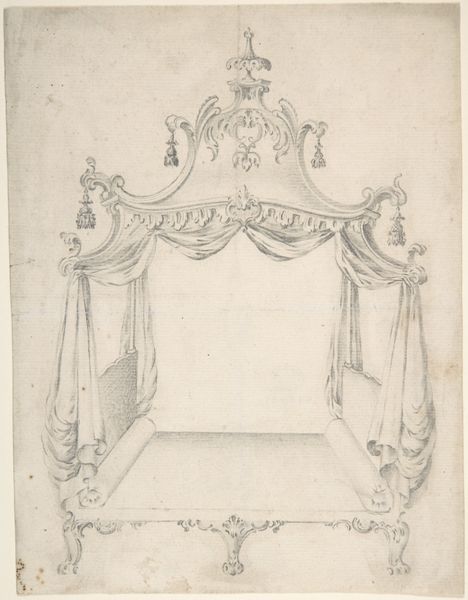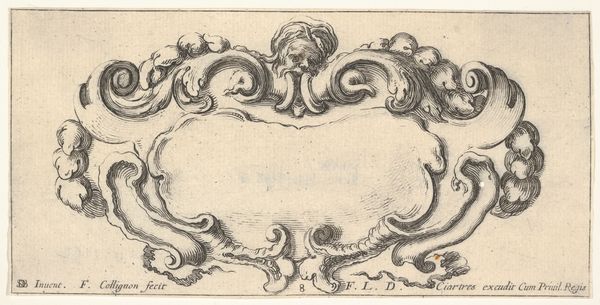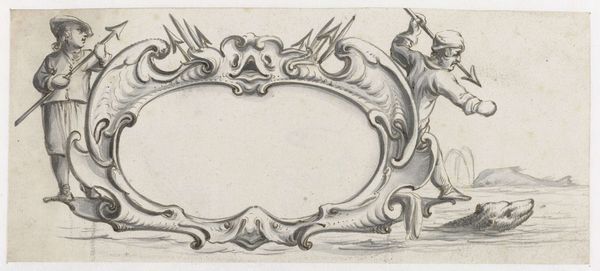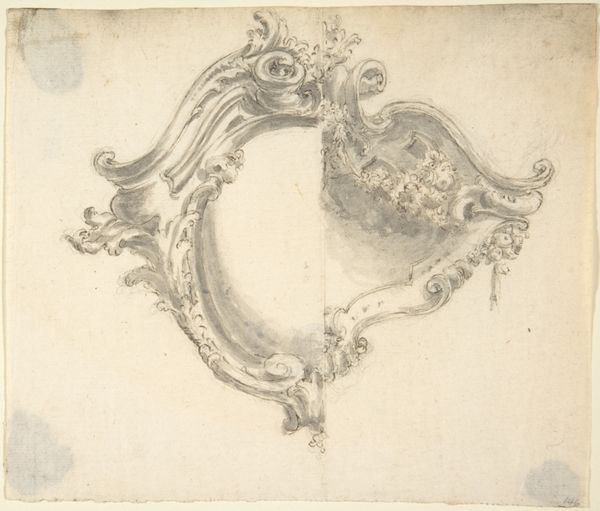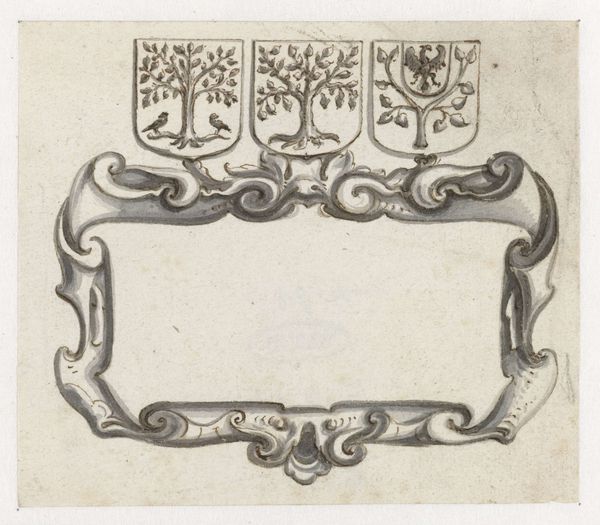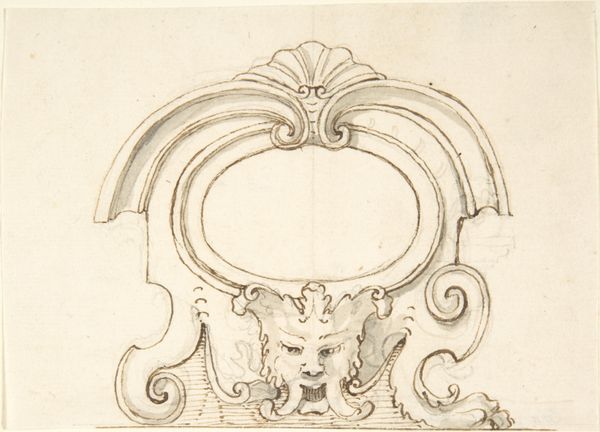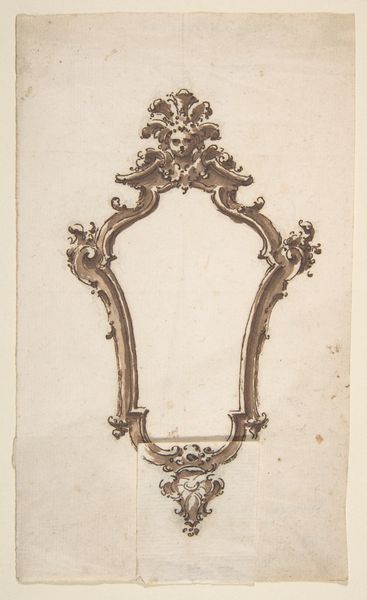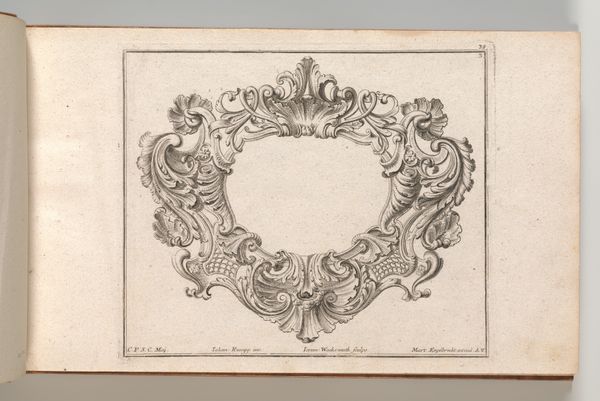
drawing, ink
#
drawing
#
baroque
#
ink
Dimensions: height 96 mm, width 130 mm
Copyright: Rijks Museum: Open Domain
Editor: This is "Cartouche met twee compartimenten en sfinxen" – or "Cartouche with Two Compartments and Sphinxes" – an ink drawing from around 1635-1640 by Pieter Jansz. It feels very architectural to me, almost like a blueprint. What catches your eye when you look at this? Curator: Immediately, I think of the materials used in the drawing's production and how they dictate the image's aesthetic and utility. Ink wasn’t simply a neutral medium; it had a social context rooted in access and skilled application. The meticulous rendering hints at its role within artisanal production. What purpose do you imagine this cartouche served? Editor: Perhaps a design for a larger object? The clean lines make me think of furniture or some other applied art. Curator: Precisely. This challenges our modern definitions of "high art" and "craft." Jansz. wasn't necessarily creating a standalone art object, but offering a template, a piece of the means of production, to be consumed. And those sphinxes... were they symbols of luxury accessible to a specific social class at the time? Editor: I hadn’t considered that aspect of consumption. Now I’m seeing it not just as a pretty design but as a material object deeply embedded in the socio-economic context of 17th-century craftsmanship. Curator: Exactly. How labor is materialized! Examining the ink, the drawing, and the possible objects made from it tells us about the labor, materiality, and consumption of art in this era. Editor: This has given me a fresh perspective; seeing beyond the art itself to the process behind its production is illuminating. Thanks for the insights! Curator: Indeed. Considering the material history enhances our appreciation of even seemingly simple drawings like this.
Comments
No comments
Be the first to comment and join the conversation on the ultimate creative platform.

